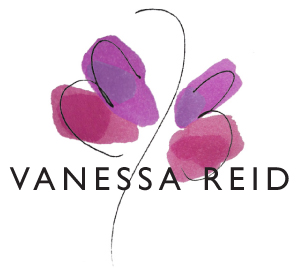The Invisible Networks
/Our very existence and evolution is connected to the invisible, underground networks of life. We are intricately connected to that which we cannot see, but which sustains and infuses all life. As systems leaders hosting transformational work, what does it meant to be part of the deeper and wider “fields” of intelligence in and around us. What would be possible if we lived intricately woven with these networks?
The first time I understood I was part of a field - as distinct from a team - was when I was part of a collaboratory of seven practitioner-consultants from 3 different countries which we called The Amoeba. This was 2010, as the financial crises were hitting Europe. We formed the Amoeba to work in partnership with the Finance Innovation Lab and Tasting the Future, two large-scale systemic transformation processes based out of the UK.
These were “social labs”, living laboratories to learn our way into new social realities. We were experimenting with what it means to create highly participatory processes to inquire into and discover new pathways for creating new systems of food and finance based on fundamentally different values than the current, dominant, unsustainble ones. This required us to show up individually with all our different life and professional skills, to inhabit and evolve multiple roles, to convene, design, host and harvest participatory and highly emergent processes and learn quickly from each moment, each phase to adapt our design to the next meaningful steps. It also meant we had to continually adapt to the work as it was emerging and to shift our roles as needed. The work itself was highly emergent, so we were listening in to what the work was showing us and needing from us. To do this, we tapped in to the greater wisdom that was held - not by us - but between and beyond us.
What showed up was this. The crucial innovation towards systemic change was actually our “field nature”, our way of working together. It was as much what we did as how we did it.
Systems are Intelligences
Moving from a team to a “field” has something to do with working very intentionally with much wider and deeper constellations of intelligence. It includes the more energetic infrastructures, the invisible, unconscious and well, things that we just don’t always have names for but are actively engaging with us. In coming together with a certain quality of intention and attention, we can access a collective intelligence otherwise unavailable to us on our own. These energetic and magnetic fields can significantly shift or deepen our awareness or actions which can result in more intelligent, just, compassionate and wise actions in service to people and planet.
It strikes me that knowing how to work with -or be - fields, and the multiple forms of intelligence available to us, is necessary if we are to truly do work that is systemic. There are theories and practices for transforming unsustainable and unjust systems, but if we stay in our heads or work only with what we know already we are accessing only a tiny part of what is available. If we do not know how to access deeper intelligences and integrate variable aspects of life into our view and our practices and our ways of being, then we are caught in the limits of human-centered hubris. We need to learn to work with the whole system. With the intangible, the unspoken, the luminous. This is the “field work”.
The Intangible Becomes Tangible
Working as a field cultivates a collective resonance which is described as the “magic’ that transforms individuals and whole groups through access to greater sources of wisdom. The word resonance means “re-sound” so when there is a flow of vibration between two things, in this case two or more people, then collectively a new vibration emerges. Collective resonance is “a felt sense of energy, rhythm, or intuitive knowing that occurs in a group of human beings and positively affects the way they interact toward a common purpose,” writes Renee Levi. It arises from the field between and beyond the individuals.
There are many ways that the “enlarged life” as the poet John O’Donohue says, comes to be with us, comes to join us to create a field with the invisible. Synchronicity, as coined by Jung, is also an example of fieldwork, as it results from becoming linked with the environment in a special way, anticipating events or sensing some underlying pattern to the world. There are many examples in different spiritual practices where we access our inner intuition or “knowing”, we open to messages or connection to the beyond. Therapeutic approaches such as in systemic or family constellations founded by Bert Hellinger access the invisible web of ancestral relations that are acting on and through a family system in the present. There is being in “the flow” whereby the connection between people, place and “the invisible” create conditions for us to be more attuned, intelligent and wise.
Jungian psychology describes a collective unconscious that lives alongside and within us. It is available when we accept our whole selves through our shadows, our dreams, our inter-connectivity with our lineage, and the inter-generational transmission of consciousness. Indigenous peoples and traditions live with the invisible in many ways, being in relations with all relations - ancestors, plant-spirits, and the cycles of life and death such as in Ceremony, where all life and time is present at all times. This information – this community – is accessible to us if we invite it in and work with it, if we see it as real and tangible.
The underground networks of intelligence
What lives below or beyond our eyesight is rich beyond our imaginations. They are participants and in some cases, protectors, and they consciously interact with and support life above ground. Author Paul Stamets who wrote Mycelium Running: How Mushrooms Can Help Save the World believes mycelium, which bear mushrooms as their fruit, have not just the ability to protect the environment but the intelligence to do so on purpose. In an interview with Derrick Jensen in the Sun magazine called Going Underground, Stamets describes how the invisible and underground systems of fungi work to nourish the whole and how they transmit information across their huge networks.
“Mycellia took an evolutionary path by going underground and forming a network of interwoven chains of cells, a vast food web upon which life flourished…. Fungi are fundamental to life on earth. They are ancient, they are widespread, and they have formed partnerships with many other species. In fact, “we evolved from fungi. We took an overground route,” he writes. “Mycelia transmit information across their huge networks using the same neurotransmitters that our brains do.”
This network that is so alive and essential to life decided to do its work underground. It is this invisible work – at least it is invisible to us topsoil folks – that sustains life on the planet.
What invisible and underground networks are waiting for our awareness?
Resonance and fieldwork are practices of cultivating consciousness as something real, tangible, accessible. Working with fields, and actually being them, helps us host the evolution of our humanity.
What kind of partnerships with the invisible networks of life are already present with whom you can be in deeper relationship?
What are the practices that bring in the multiple levels of intelligence that are just waiting to be invited to the party?
How would our organizations, communities, institutions be different if we saw the wholeness of integrating the visible and the invisible?
Ask a mushroom, or shapeshift into being one. Seriously.
*the orginal article was published on the website of Organization Unbound.





